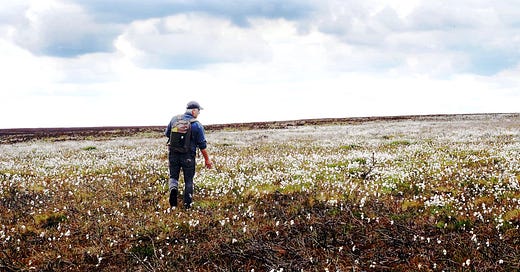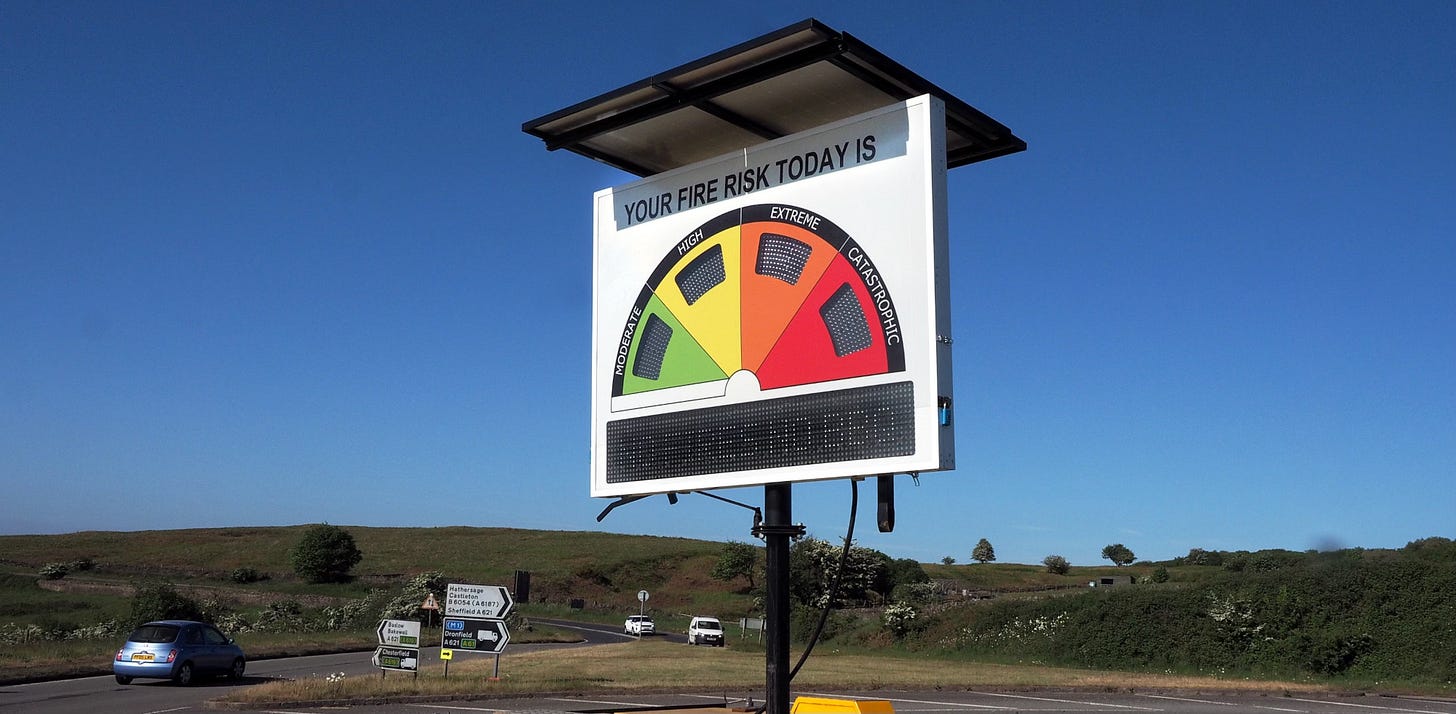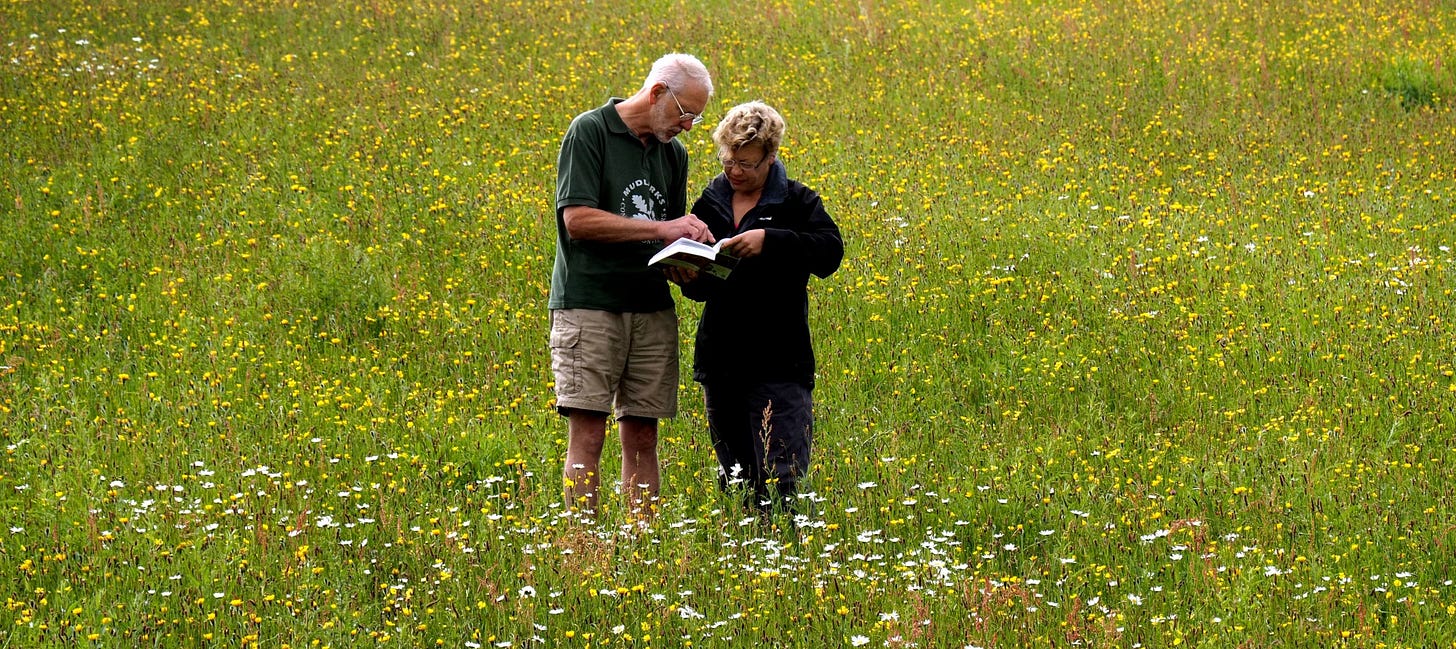Sunday at Bill's Mother's: 25th May 2025
News from the hot spring-watched moors, Parkwood Springs parkrun on the final straight, sunlight on the Sheaf, and why dull is cool for the city on the move.
Morning. The closest we get to a news edition today, with updates on the Parkwood Springs parkrun, news of the open but not yet rewilded city centre Sheaf, a multi-million pound step change for walking, wheeling and cycling, and three weeks of national publicity for the springtime moors around the Outdoor City - just as the land’s protectors reach to Australian-style wildfire warnings.
Subscribe for a free trial of Sheffield’s out there magazine below. Or, if you appreciate what we do, and you’d like to see us spread our coverage and readership, upgrade to become a paid up supporter for a mere £4 a month, or less if you go annual.
The pocket money contributions from our 300+ wonderful full supporters bring you all the below (and our 230+ fairy interesting archive features), so thanks so much to all of you. But if just another 75 of you switch from free to pocket money paid, we’d be able to provide work for a lot more freelancers too, to extend our coverage.
Parkwood Springs Into Parkrun Action (Finally)
After hanging around on the start line since last year, as national parkrun officials work through their rubber stamping procedures, the unofficial trial run of the spectacular 5k running circuit at Parkwood Springs is expected in a few weeks.
As reported earlier (with over ambitious estimated start dates, I know) the run begins near the new cafe off Cooks Wood Road, then winds up, down and around the hillside park high above Sheffield.
Organisers believe this will be the only UK parkrun where you’ll be able to look down on runners at another parkrun as you participate. (And if so, Hillsborough runners will say the same, but looking up and potentially tripping over a goose).
If all goes to plan, the official Parkwood Springs parkrun (the city’s 8th, if you count Rother Valley near Beighton) will launch later this summer.
Meanwhile the Steel City Trail 10 series continues on the gritty hills and trails around Parkwood Springs and Wardsend Cemetery on Sunday June 15th
Spring Watch For Sheffield
Last week the BBC and National Trust announced Longshaw as the home of this year’s Springwatch, in the show’s 20th anniversary year.
Behind the scenes, I hear the moorland around Sheffield and the northern Peak District will take a starring role, with Burbage, the Dark Peak and Eastern Moors featured along with the woodlands and meadows of Longshaw.
I’ve covered this landscape for many years, and over the next few weeks I hope to bring our full subscribers a few new archive features on stories our local Springwatch team may or may not include. (Meanwhile, here are some posts about our local moors and Longshaw already covered by It’s Looking A Bit Black Over Bill’s Mother’s, for background before tuning in tomorrow).
Springwatch will be looking for Pied Flycatchers, Merlins, Ring Ouzels and Curlews, and might even catch up with the fascinating Northern Hairy Wood Ant colonies, and shy Adders, a Longshaw ranger told me.
He said he was very proud to have the BBC around for the next three weeks, warning that their broadcast location is not in any of the usual hotspots. (Perhaps explorers of Longshaw’s rhododendron mazes might pop up behind Packham and Strachan in one of the live evening shows, who knows?)
It’s likely we’ll hear about the dogged and often ingenious conservation work by staff making our moorland a fit home for all these creatures. We sometimes forget that Curlews and Mountain Blackbirds are rare in other people’s lives, and few other northern citizens have Adders or herds of Red Deer a thirty minute bus ride away.
Urban Sheffield will feature too, with a Swift nest hopefully spurring accolades for Sheffield Swift Network, and visits to rewilding city gardens.
I hear our Peregrine Falcon nest (and chicks) were on the Springwatch to-do list, until the costs of a camera team on a former church tower curbed their enthusiasm.
The next three weeks will be unpredictable, say the BBC, and I hear that’s partly because that’s how nature operates, but also because cost cutting has moved the show into a slightly more reactive approach.
Crossing the road at Longshaw last week to find a towering Red Deer defending the Burbage Valley confirmed that surprises are only natural in this part of the world. An unpredictable Sheffield Moors Springwatch will be worth watching.
Shining Light on the Sheaf
Castlegate Park in the city centre will have a delayed opening (the end of 2026 rather than next spring) so designers can make the most of new archaeological finds.
Meanwhile, the Sheaf and Porter Rivers Trust (SPRT) tell me the daylighted river Sheaf is so delighted to feel the sun after over 100 years, along with the effects of removing the huge weir holding it back before reaching the Don, that it’s already developing new meanders, in readiness for work to renaturalise it for wildlife.
“At present, it’s like an elongated box with the lid taken off,” says Simon Ogden of SPRT. “But what we want to know is, how will it be opened up?”
The steep sides above the river will need supporting, but SPRT hope the new plans will include ways for the public to get as close as possible to the river level, as well as building elegant rather than ugly props, and a wonderful bridge over the river around 20 metres down from Exchange Street.
During the archaeological delay, while diggers and staff are on site and available, SPRT are asking if work could speed up to open up and rewild the river, not least removing the riverbed rubble from the work to take the lid off earlier this year, and finishing the renaturalising and public access plans.
Meanwhile, the hugely popular SPRT culvert tours (to raise money for the trust’s work), will hopefully start again in July, this time with a new finale across the vast cave of the Megatron chamber towards the daylighted Sheaf.
“People will see a completely different view from the Megatron now,” says Simon.
Photos courtesy of Sheaf & Porter Rivers Trust
Wildfire Season
A Catastrophic level fire, under the Australian fire risk designations, means: ‘These are the most dangerous conditions for a fire. For your survival, leave bushfire risk areas. If a fire starts and takes hold, lives are likely to be lost.’
An Extreme fire risk, according to straight talking Australians, means: ‘These are dangerous fire conditions. Fires will spread quickly and be extremely dangerous,’ along with the guidance: ‘Reconsider travel through bushfire risk areas.’
Head out over Owler Bar to the uplands of the Peak District and you’ll encounter the first Australian style fire risk warning sign ever seen in these parts, warning about the realities of a huge increase of visitors to the beauty spots high above Sheffield, along with a landscape dried out by a new kind of English spring.
When I saw the sign on Friday, it was set to level 3, High Risk in the UK system, or Extreme in Australia.
Near the roundabout above Totley, where thousands of travellers head out to the Peak District every day, there are acres of crumpled brown bracken and tinder dry moor grass. Just a few weeks ago, the green spirals of this year’s bracken appeared, but dry browns still dominate much of the landscape, even after the scattering of gentle rain this weekend.
Spring is the new fire risk season, Tony Price from Moors for the Future tells me. When there’s no rain, last year’s vegetation becomes a bone dry fire risk before the rains eventually bring new growth.
Traditionally, moorland managers saw hot high summers as the fire season, but by late June and July, there are usually enough green plants growing to at least reduce the risk and damage from moorland wildfires. So now we have two fire seasons, in spring and high summer, and conservation organisations like Moors for the Future are having to adapt.
(Nowadays, we also have thousands of beautifully shot videos of influencers tending a glowing fire against a picturesque upland sunset. People travel to the Peak District moors just to film such material, I hear, bringing campfires from across the north.)
Tony rang round and found Matlock mobile traffic sign company MVIS had a spare Australian fire risk sign, which they’d be only too happy to donate so Moors for the Future could run a trial at Owler Bar to see if the message (No Fires! No Barbecues!) would hit home.
“If just 10% of people see the sign and take note, I’d be happy,” Tony says. “It looks different, so I hope people who pass by won’t just dismiss it.”
After almost no rain for 12 weeks, there have been more than 30 Peak District wildfires so far this spring. Apart from the damage to land and wildlife, moorland fires take up a colossal amount of time and human resources to put out, says Tony, and the work by firefighters and moorland staff is frightening and terrible.
At a fire on Big Moor a few years ago, I saw soot-blackened rangers stumbling off the smouldering moor after working all day to bring the burning under control, leaving behind the embers of snakes, bird nests and lizards. Some of the firefighters were in tears after seeing so much death and destruction.
The restoration work overseen by Moors for the Future has to start again in such cases, Tony says, but evidence seems to show that when restoration has already been carried out on burned land, (building little dams, or moss planting, for example), the cost and time for that new work is reduced.
If the trial at Owler Bar succeeds, Tony says, he’s asking MVIS about a larger sign later in the year, and possibly a new programme of Australian style fire signs at more entrances to our dry uplands.
I ask him about the use of the ‘Catastrophic’ risk level. It’s when a fire is already raging through the landscape at risk to people and property, he explains.
“I don’t think we’ll be using that level in the UK,” he says. Let’s hope so. But for now, the warnings are there for all to see.
City On The Move
There were lots of shorts and almost no suits among the well-honed people nibbling hummus and beetroot felafels at last week’s MoveMore conference at Sheffield University.
The activity programme brought 180 delegates to talk about how things like walking, cycling and wheeling around the place has already jumped Sheffield into the top spot for activity in the 12 big cities of the UK outside London - but we could and should do more. Not least because physical activity or sport makes you live longer and better.
Director of public health Greg Fell told us about Healthy Life Expectancy, the public health term for the age you might get to in pretty good health.
In Dore, he said, people get to 65 or 70 in good health, and live to around 85. In Darnall, the figures drop to 45/50 in good health, and a life expectancy 15 years younger. Darnall residents spend a third of their (shorter) lives in poor health, while the people of Dore will only expect to be poorly for a seventh of their lives.
“I need to get 560,000 people to sweat more and lift heavy stuff,” Greg Fell explained, not least because being poorly prevents thousands of people from working and contributing to the economy.
Nationally, he bombshelled, loss of productivity due to ill health costs the UK economy a quarter of a trillion pounds a year, and the lack of physical actvity is implicated in that figure. From a public health perspective, obesity is the new smoking.
Our status as top core city comes from doing dull but effective stuff over a long time, he said, lots of people doing ordinary things in the background to promote and enable more moving. Like a new programme to go around persuading health professionals to take all this on, for example.
“Dull is the new cool,” said our director of Public Health.
There was a sense of optimism unusual in public sector conferences in these days of ever tightening purse strings. Sport England will continue funding work in Sheffield until at least 2028, we learned, and transport planners who’d been banging on about walking and cycling to little avail for most of their working lives told us Sheffield was looking at a new public e-bike hire scheme next year, and £120 million pounds worth of funding up to 2027 to help build a network of walking, wheeling and cycling routes and healthier neighbourhoods.
“It used to be thousands, not millions,” we were told.
And 180 MoveMore delegates strode, cycled or ran out into the afternoon sun ready for more of their dull stuff to make Darnall as healthy as Dore, and save the country a fortune.
More What’s On Out There (from Sunday 25th May)
A tiny selection from our new (and regularly updated) What’s On Out There news and listings post for May and beyond.
Sun 25th - Yorkshire Rose Womens Cycle Rides
Sun 25th - Sheffield Conservation Volunteers - Sheffield General Cemetery
Tues 27th - Friends of Ecclesall Woods volunteer & footpath repair session
Weds 28th - Longshaw Social Walk
Thurs 29th - Graves Park Climate Resilience Project: Bird Watching walk
Fri 30th - SRWT Volunteering - Greno Woods
Sat 31st - Parkwood Springs conservation volunteering
Next week, more on the meaning of wild, and how many birds can you see in a day of walking and bussing around Sheffield? And lots. more, of course.
A monthly subscription to It’s Looking A Bit Black Over Bill’s Mother’s will cost you less than a disposable supermarket barbecue, and make you much wiser and happier.












